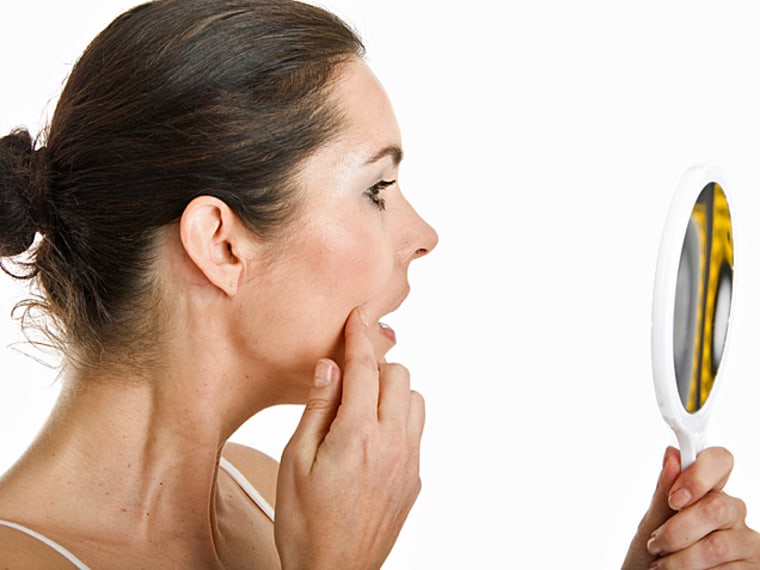When my mom recently pointed to my upper lip and asked, what's that? I knew things had gone from bad to worse. My sun mustache—as it was so unaffectionately nicknamed—clearly had gone from barely there to Tom Selleck status.
Too much time in the sun this summer created an unwanted darkening of my upper lip. (Has that happened to you, too?) To find out what causes it and, more importantly, how to get rid of it, I consulted top dermatologists. Here’s what they said:
What is a "sun mustache"?
It's melasma, a skin discoloration resulting in brown to gray-brown patches on the face, affecting far more women than men. In addition to the upper lip area, melasma can also occur on your cheeks, the bridge of your nose, forehead and chin. The exact cause is unknown, explains dermatologist Melissa Piliang, M.D., of the Cleveland Clinic, but is believed to be due to a combination of hormones, sun exposure and a genetic predisposition.
Birth control pills and hormonal changes—especially among pregnant women—may also be to blame, adds cosmetic dermatologist Howard Sobel, M.D., founder of the DDF skin care line. This facial discoloration is often referred to as the "mask of pregnancy" on moms-to-be.
Can you get rid of it?
Fortunately, melasma usually fades in the winter months, explains Dr. Piliang. But if you’re an avid skier or live in warmer climates, strict sun protection is especially necessary year round to shield against excessive discoloration.
To help diminish the existing dark areas, Dr. Piliang suggests applying topical creams containing hydroquinone. The skin lightener is available in over-the-counter beauty products, such as Porcelana, and in prescription-strength products, adds Dr. Sobel. You may also use glycolic acids and retinoids to help remove dead cells, promote faster skin renewal and reduce pigmentation. A good concealer can also be your new BFF.
How do you prevent it?
Like any good skin care routine, Dr. Piliang recommends limiting your sun exposure, avoiding tanning beds, wearing a hat, staying in the shade, and slathering on a sunscreen with at least an SPF of 30 every day. The product should contain a physical sun blocker, such as zinc oxide or titanium dioxide, for the most effective protection against UV rays. One application isn't enough, though, says Dr. Sobel; you need to reapply every two hours.
If the discoloration is extremely noticeable or bothersome, consider alternatives to birth control pills or hormone replacement therapy, he adds.
A version of this story originally appeared on iVillage.
